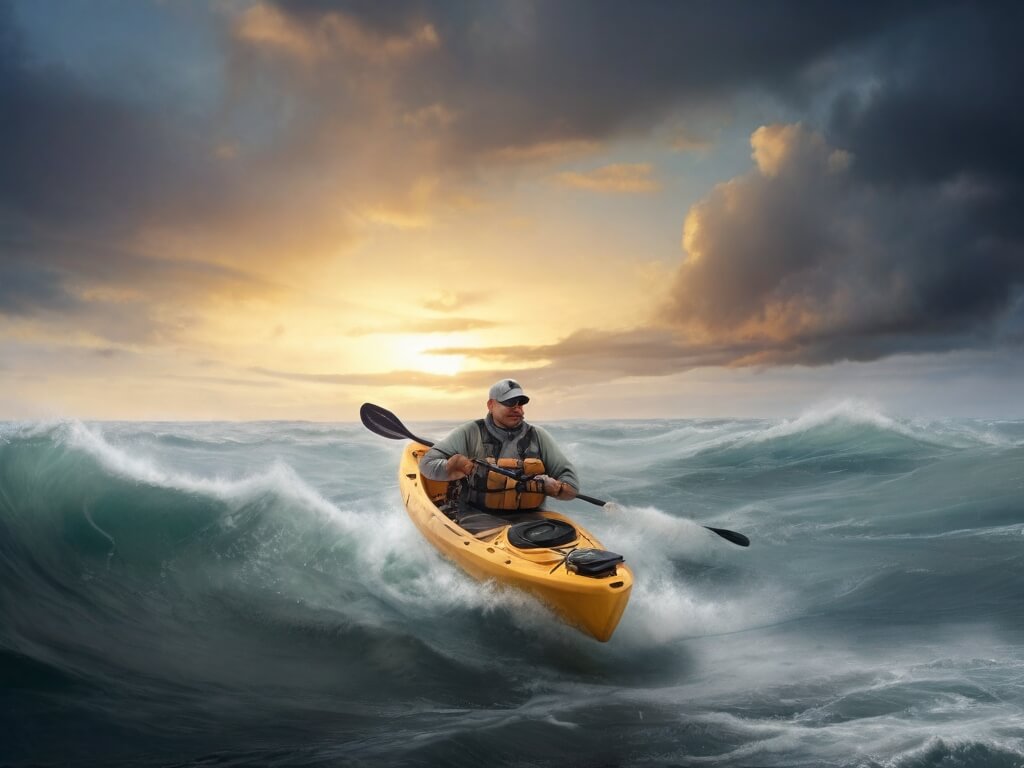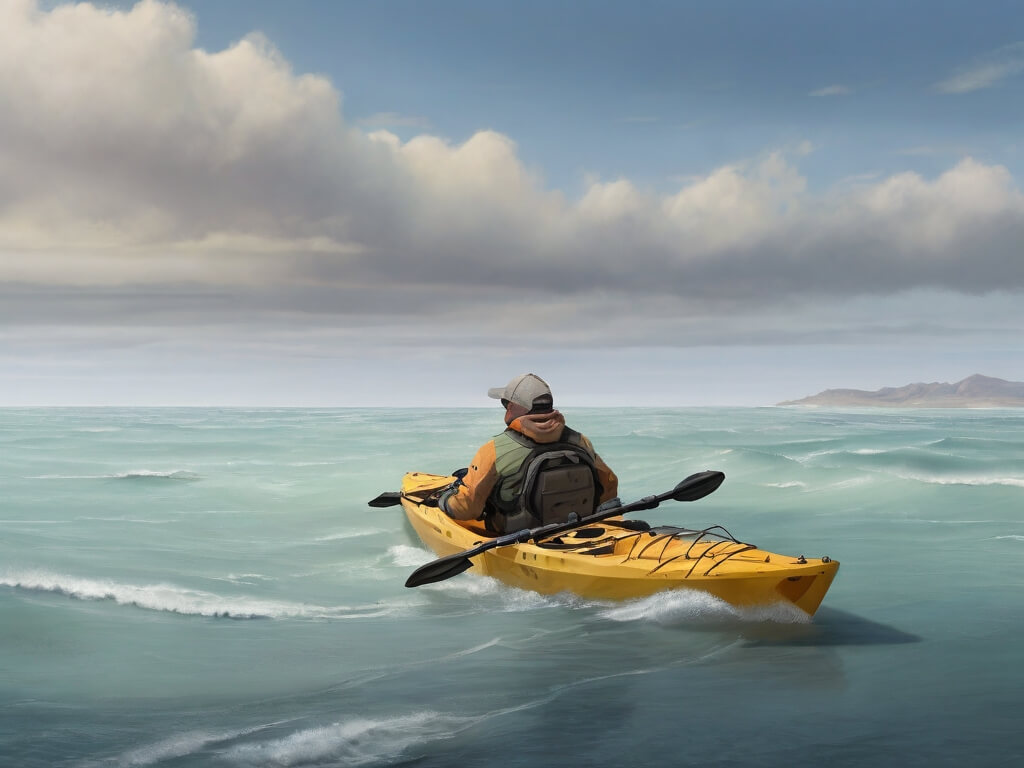How Much Wind is Too Much for Kayak Fishing?
Introduction
In this comprehensive guide, individuals passionate about kayak fishing are invited to delve into the intricate tapestry of factors that dictate success or challenge in their aquatic adventures. The winds, ever capricious, play a pivotal role in shaping the narrative of each angler’s journey. T
Through this immersive exploration, readers are beckoned to not merely skim the surface but to dive deep into the complexities surrounding the influence of wind on the art of kayak fishing.
As they prepare to set sail, a journey unfolds where the currents of wisdom intertwine with the age-old question: how much wind is too much for kayak fishing? Beyond the surface-level considerations, this guide seeks to provide a nuanced understanding, offering a wealth of insights that extend far beyond a mere weather forecast.
As the readers embark on this odyssey, the goal is not only to equip them with practical knowledge but also to foster a profound appreciation for the delicate balance between nature’s elements and the pursuit of the perfect catch.
So, join this expedition into the realms of wind and water, and let the waves of information carry you towards a heightened understanding of the delicate dance between kayak, angler, and wind.

Understanding the Impact of Wind on Kayak Fishing
Wind can be a kayak angler’s best friend or worst enemy, depending on its intensity and direction. To truly master the art of kayak fishing, you must comprehend the nuances of how wind affects your experience on the water.
The Science Behind Wind and Kayak Fishing
Ever wondered why the wind seems to make or break your fishing day? Understanding the science behind wind patterns and their impact on water can significantly enhance your fishing strategy.
The wind creates surface currents, affecting the movement of your kayak and altering the behavior of the fish beneath. Strong winds can lead to choppy waters, making it challenging to maintain stability.
Significance of Wind for Kayak Fishing
Kayak fishing enthusiasts often find themselves engaged in a perpetual battle with the wind, considering it more of a hindrance than an ally. However, delving deeper into the dynamics of this natural force reveals a myriad of unexpected benefits that can elevate the kayak fishing experience to new heights.
1. Drift Fishing Mastery
One of the most advantageous aspects of wind for kayak fishing lies in the art of drift fishing. A gentle breeze can transform your kayak into a mobile fishing platform, allowing you to effortlessly cover vast stretches of water without the constant need for paddling. This controlled drift enables anglers to present their baits in diverse locations, increasing the likelihood of encountering a variety of fish species.
2. Improved Lure Presentation
Wind-induced ripples on the water’s surface create a natural camouflage for lures, making them appear more realistic to unsuspecting fish. This phenomenon is particularly beneficial for anglers employing topwater lures or finesse techniques. The subtle movements caused by the wind can entice even the most cautious fish to strike, providing a unique advantage to those who embrace the breeze.
3. Concealed Approaches
Wind not only aids in presenting lures but also serves as a valuable ally when approaching wary fish. The sound of wind and the natural disturbances it creates on the water can mask the subtle noises produced by a kayak or angler. This makes it easier to get closer to your target without alerting them, increasing the chances of a successful catch.
4. Access to Remote Fishing Spots
Kayak fishing is synonymous with exploring off-the-beaten-path fishing spots. While paddling against the wind can be challenging, taking advantage of a tailwind allows anglers to effortlessly reach remote locations. This opens up a world of opportunities for discovering untouched fishing grounds, where the prospect of landing trophy-sized fish becomes a tangible reality.
5. Active Fish Behavior
Wind-induced currents stimulate the instincts of fish, making them more active and receptive to feeding. Kayak anglers can capitalize on this phenomenon by strategically positioning themselves in areas where the wind is pushing water against structures or creating underwater currents. Such locations often attract baitfish, luring larger predators and setting the stage for an exhilarating fishing experience.
6. Temperature Regulation
Beyond its impact on fish behavior, wind plays a crucial role in regulating water temperature. Wind-driven currents promote the mixing of the water layers, preventing stagnation and creating more uniform temperatures throughout the body of water. This can be particularly advantageous for kayak anglers targeting specific temperature ranges favored by certain fish species.
7. Enhanced Casting Distances
A moderate wind can act as a natural casting partner for kayak anglers. The wind at your back can significantly extend casting distances, allowing you to reach distant structures or cover more water efficiently. This increased casting range enhances your ability to explore a variety of fishing environments without constantly repositioning your kayak.
The benefits of wind for kayak fishing extend far beyond the initial perception of it being a mere obstacle. By embracing the wind as a strategic element, anglers can unlock a host of advantages that amplify the thrill and success of their fishing endeavors. So, the next time the breeze picks up, consider it not as a challenge but as a reliable companion on your journey to reel in the perfect catch.

How Much Wind is Too Much for Kayak Fishing?
Although wind is an important element for kayaking, it is important to know how much wind is good for kayakers and how much wind can cause trouble.
Determining the Ideal Wind Speed
So, how much wind is too much for kayak fishing? The optimal wind speed for kayak fishing typically falls between 5 to 15 miles per hour. Anything beyond this range may pose challenges, affecting your ability to control your kayak and locate fish.
Signs You’ve Reached Your Limit
Identifying when the wind becomes too much is crucial for your safety and fishing success. Watch out for signs such as difficulty paddling, excessive drift, or an inability to maintain your desired fishing position.
Factors Affecting Wind Tolerance
Kayak Size and Design
The size and design of your kayak play a pivotal role in determining its wind tolerance. Smaller kayaks may be more susceptible to strong winds, while longer, narrower models are often more stable.
Angler’s Skill Level
Your skill level as an angler matters. Experienced kayakers may navigate through stronger winds more adeptly than beginners. It’s essential to know your limitations and gradually challenge yourself as you gain proficiency.
Tips for Kayak Fishing in Windy Conditions
Choose the Right Location
Selecting the right fishing spot can make a significant difference when dealing with windy conditions. Sheltered areas, coves, or leeward sides of islands can provide a more peaceful environment for kayak fishing.
Anchor Strategically
Anchoring is a valuable technique in windy conditions. Utilize a reliable anchor system to maintain your position, ensuring you can focus on fishing without constantly battling the wind.
Adjust Your Fishing Techniques
Windy conditions call for adaptability. Consider using lures that mimic distressed prey, as wind can create ripples and disturbances in the water that attract fish.
Frequently Asked Questions
1. Is kayak fishing safe in high winds?
Safety should always be a priority. While experienced anglers may handle higher winds, it’s crucial to assess your skill level and choose calmer days for beginners.
2. Can wind affect the types of fish I catch?
Certainly, wind influences fish behavior. Some species may become more active in windy conditions, while others may seek shelter. Adjust your strategy accordingly.
3. Should I cancel my kayak fishing trip if the wind is strong?
Not necessarily. Evaluate the wind speed and your comfort level. If it’s within your skill range and you take the necessary precautions, you can still have a successful trip.
4. How can I check the wind forecast before heading out?
Numerous weather apps provide real-time wind forecasts. Stay updated on wind speed and direction to plan your kayak fishing adventures effectively.
5. What safety precautions should I take in windy conditions?
Wear a personal flotation device, inform someone of your fishing plans, and carry essential safety gear. In windy conditions, extra caution is crucial for a safe and enjoyable experience.

Conclusion
Mastering the balance between wind and kayak fishing is an art that comes with experience and knowledge. By understanding the impact of wind, recognizing your limitations, and implementing effective strategies, you can turn a challenging day into a rewarding fishing adventure. So, the next time you ask, “How much wind is too much for kayak fishing?” refer back to this guide and let the winds guide you to success. Happy fishing!

